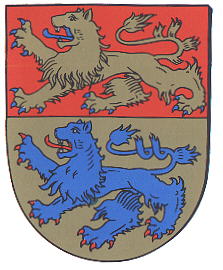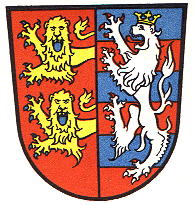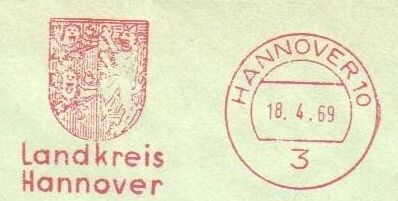Hannover (kreis)
This page is part of the German heraldry portal Deutsche Wappensammlung |
Heraldry of the World |
|
German heraldry:
|
Selected collector's items from Germany:
|
HANNOVER (H)
State : Niedersachsen
Additions : 1930 Linden, 1974 Burgdorf, Neustadt am Rübenberge, Springe
Incorporated into : 2001 Region Hannover
| German | |
| English | (kreis) No blazon/translation known. Please click here to send your (heraldic !) blazon or translation |
Origin/meaning
The arms were granted on December 19, 1974.
As combination of elements form the old districts was not possible, it was chosen to use the arms of the two main branches of the Welfen dynasty, that played a major role in the whole district. The golden lion is the lion of the Hannover branch, the blue one the lion of the Lüneburg branch.
The old arms were granted on April 15, 1935.
The arms are based on the seals of the old territories (Ämter) Calenberg and Hannover. The whole area historically was ruled by the Welfen dynasty, one of the most influential families in the Northern part of Germany. The right part of the arms thus shows the two lions, taken from the arms of the family. These lions were used in the seals of the Amt Calenberg. The left part shows the lion of the counts of Roden. These counts had their castle in Lauenrode, but were succeeded as rulers of the area by the Welfen in the 13th century. The Amt Hannover, however, still used the old lion in its seals.
| The arms on an cover |
Contact and Support
Partners:
Your logo here ?
Contact us
© since 1995, Heraldry of the World, Ralf Hartemink 
Index of the site
Literature : Stadler, 1964-1971, 8 volumes; Linder and Olzog, 1996














